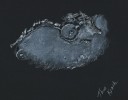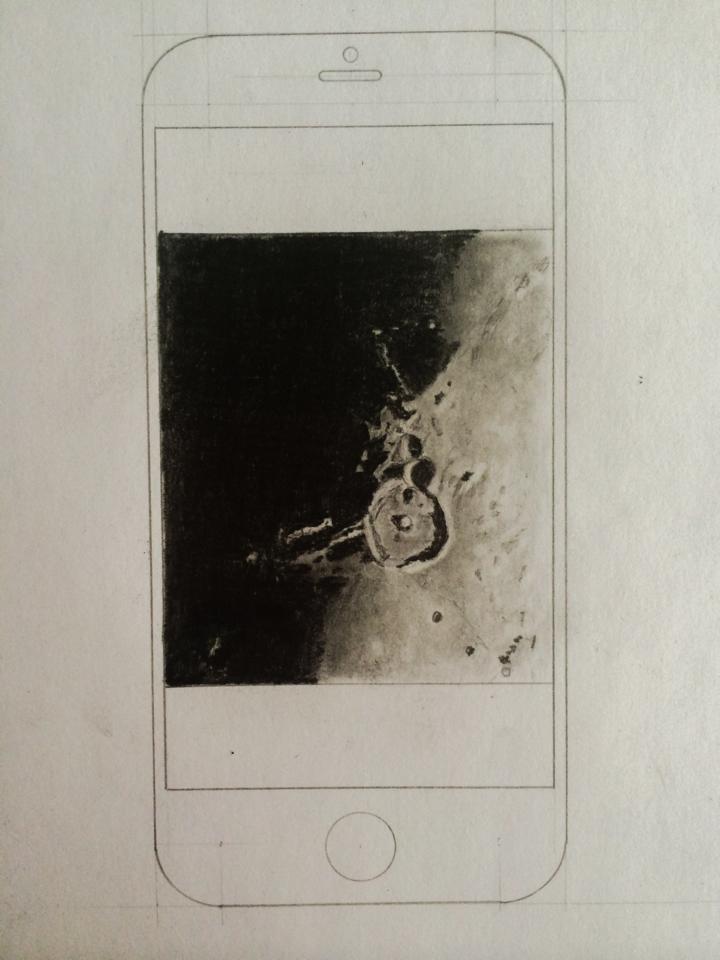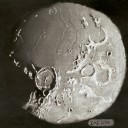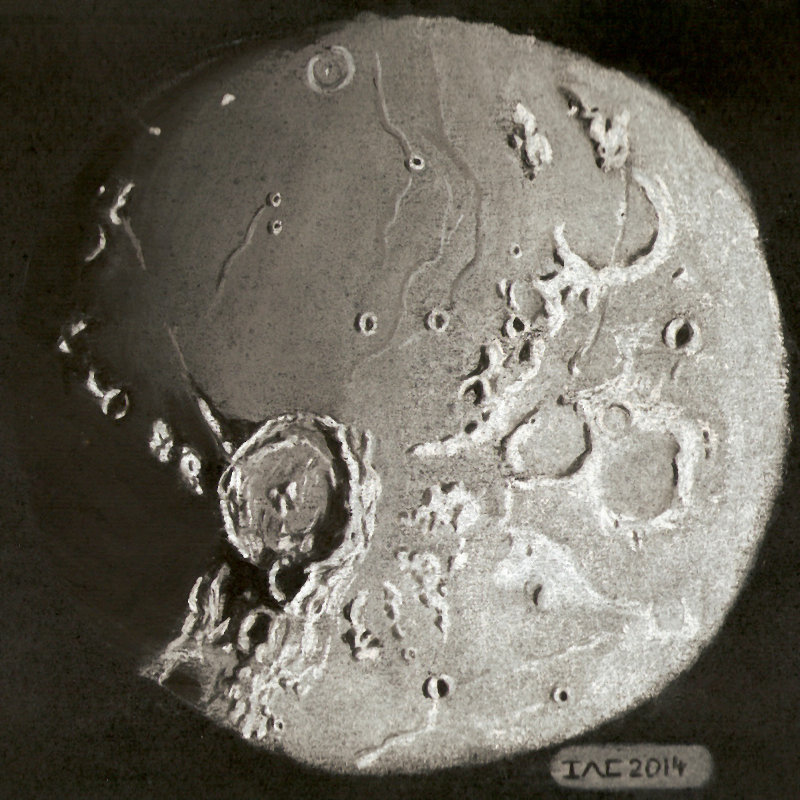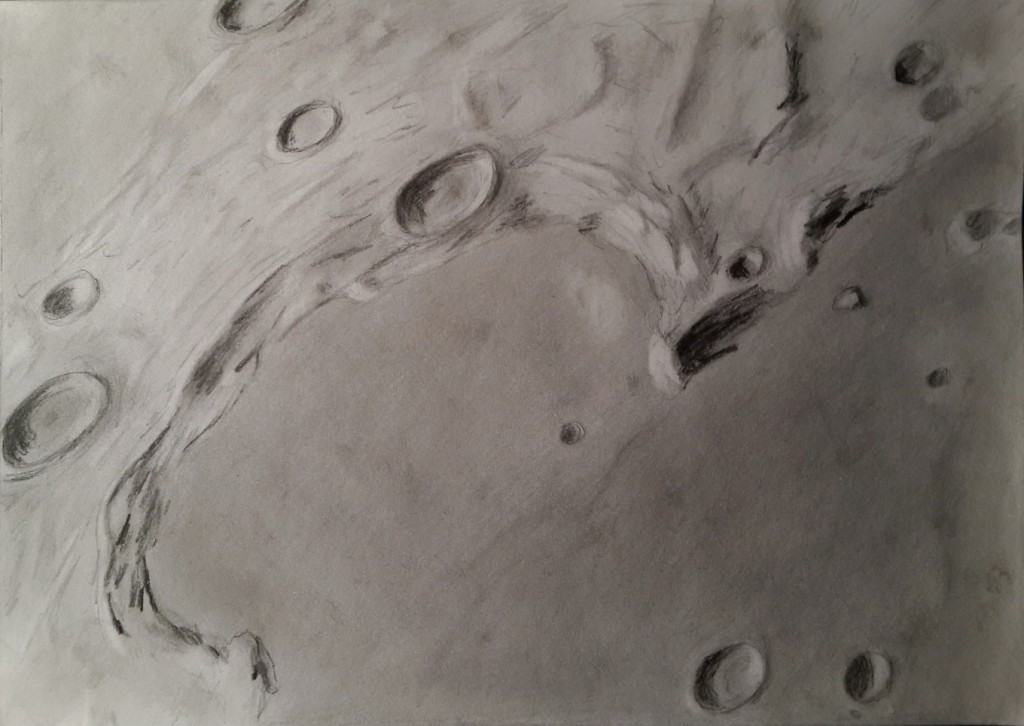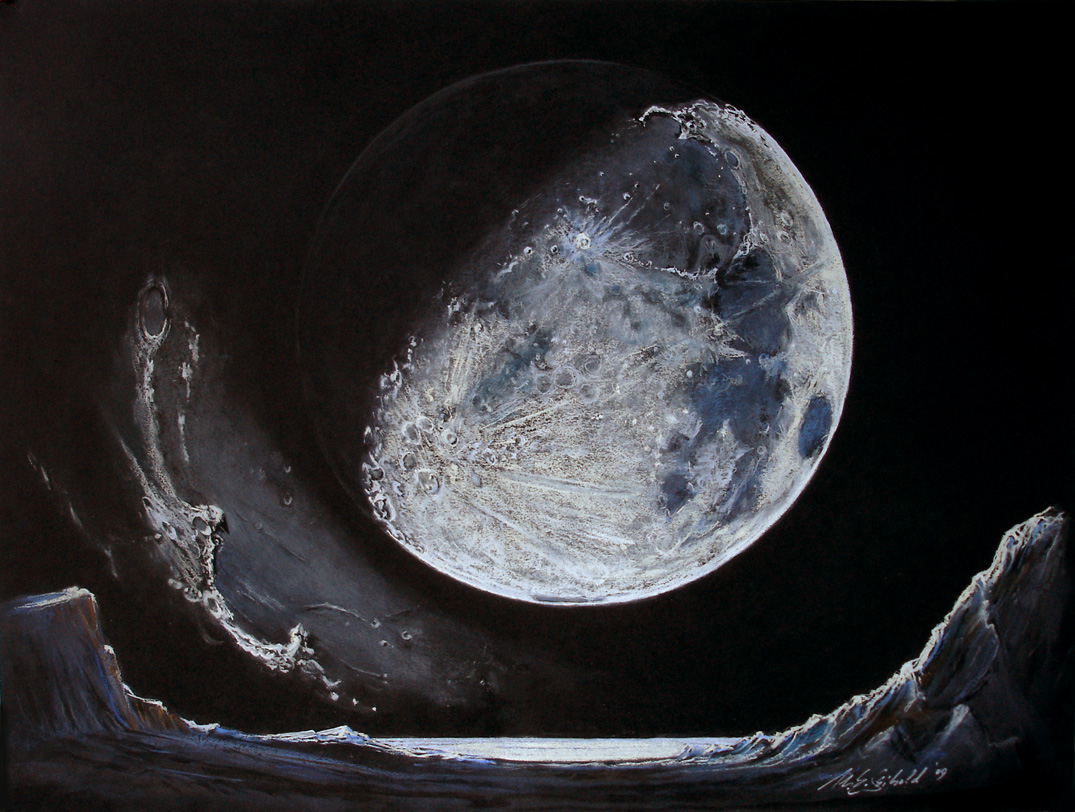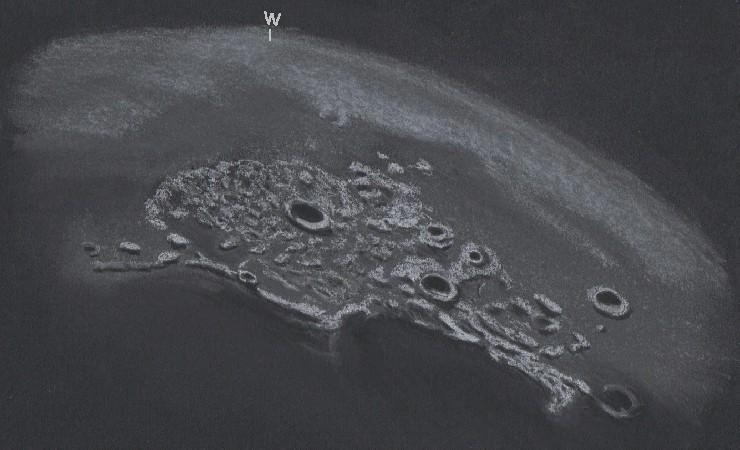

Aloha!
This was one of those nights things just fall together. Excellent seeing and light enough from the Moon that I could see the paper well. After finishing my sketch at the eyepiece I went inside to clean it up and was pleasantly surprised that I liked it pretty much the way it was.
110km wide Gassendi Crater showed some excellent roughened floor details with hummocks casting shadows as well as floor rilles illuminated as bright & dark lines. Rima Mersenius is brilliantly lit on the terminator and the bright scarp of Rupes Liebig can be seen at the base of the wall.
Gassendi Crater, Mersenius Rille, Rupes Liebig, Mare Humorum @11.7 days lunation
.12/2/14 2030-2140 HST
12.5″ Portaball, 227x
Canson Black paper and white and black Conte’ Crayon, white charcoal pencil
Photoscape to adjust contrast
Cindy (Thia) Krach
Haleakala Amateur Astronomers
Maui, Hawaii
